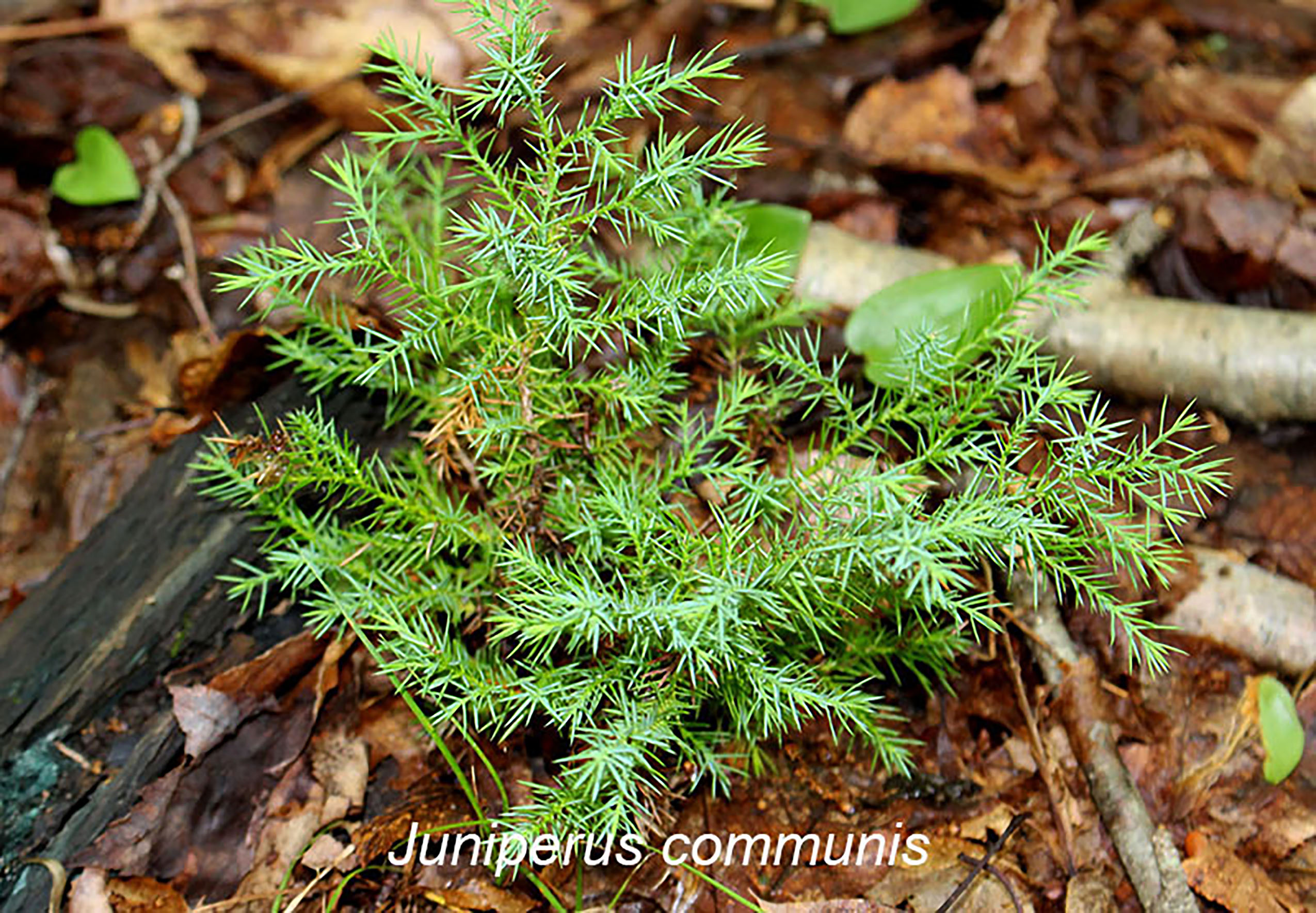
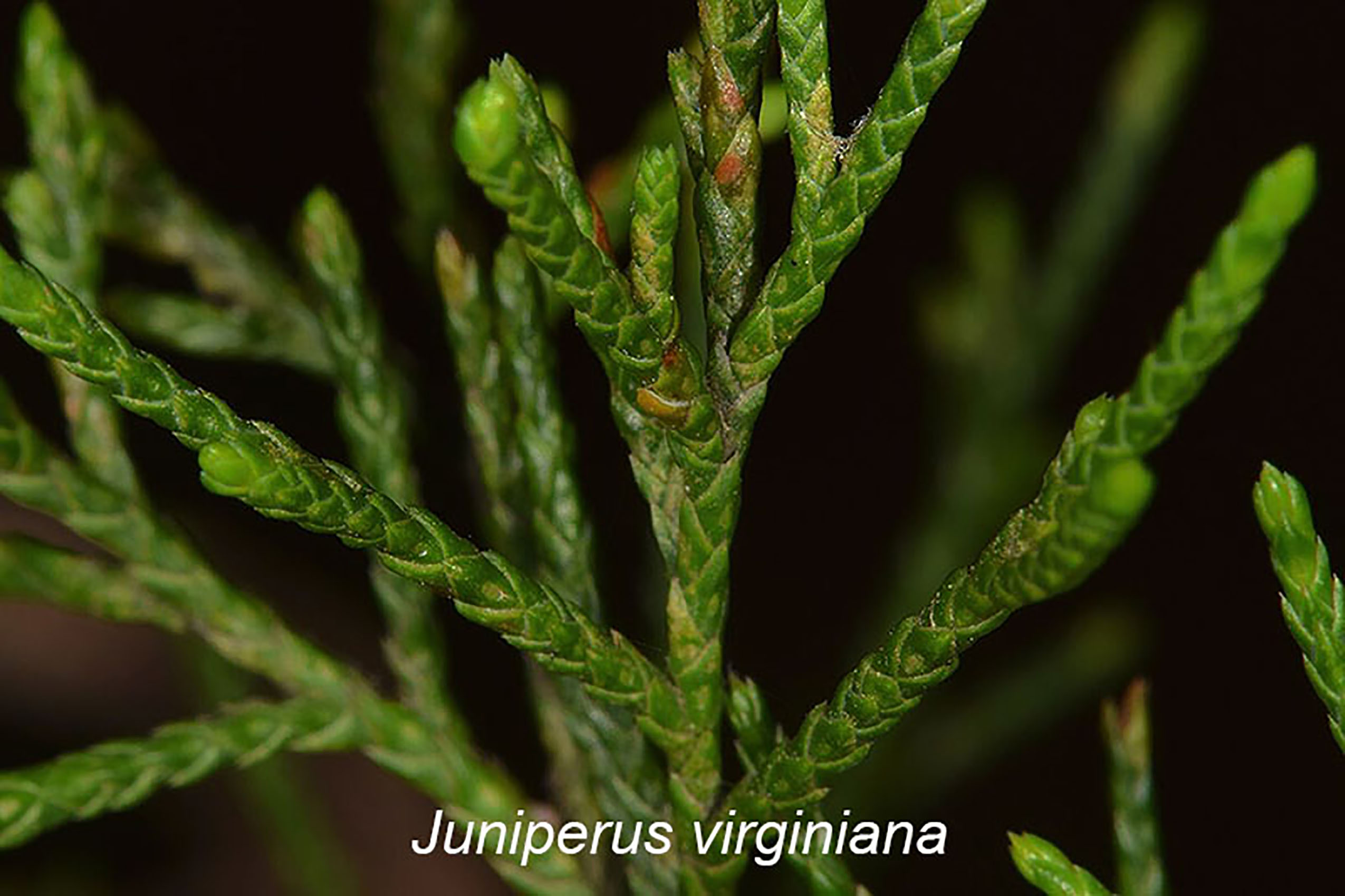
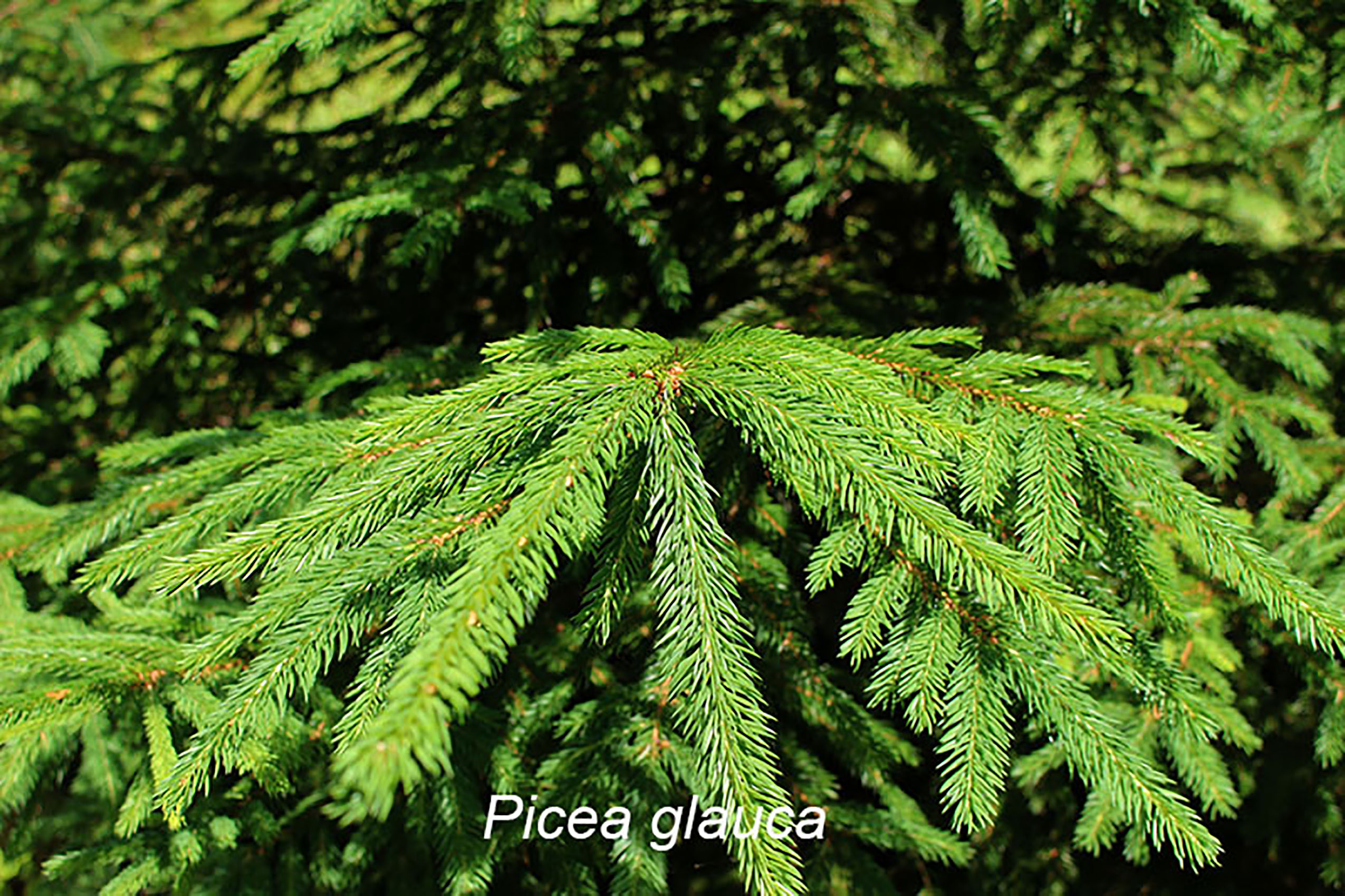
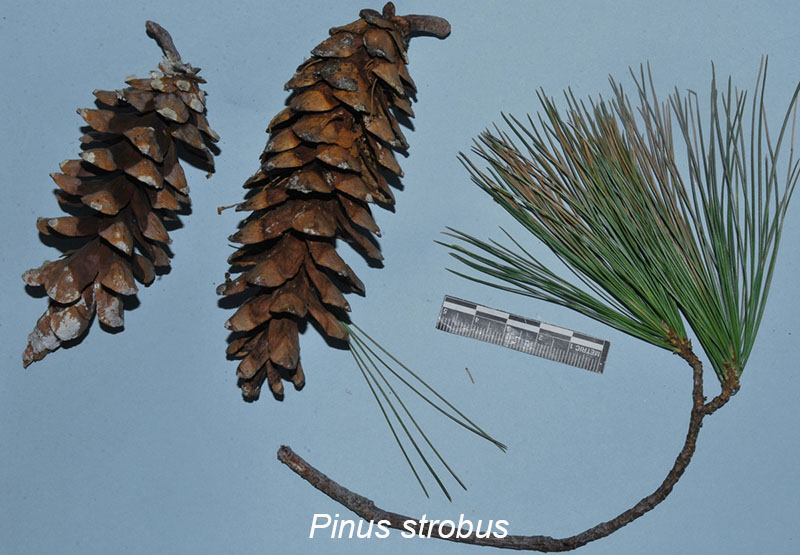
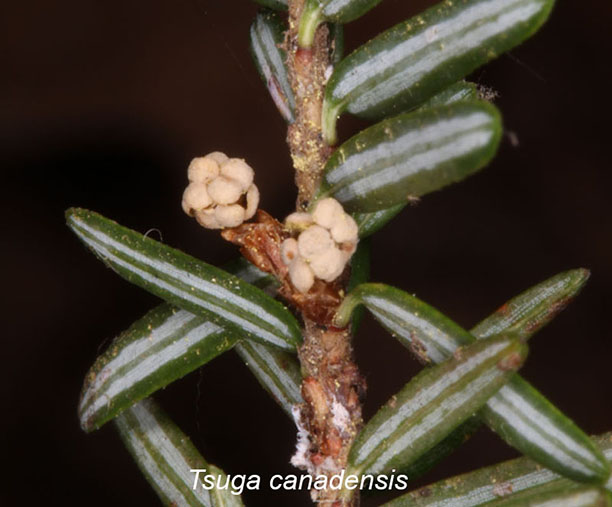
Pines and Relatives (Gymnosperms)
Author: Scott A. Mori
Gymnosperms are seed-bearing vascular plants that do not have their seeds surrounded by an ovary. The name comes from Greek and means naked (= gymno) and seed (= sperm). Angiosperms, which are related to the gymnosperms, also have vascular tissue and uniquely possess seeds surrounded by an ovary.
There are six different groups of gymnosperms extant in the world: Cycadophyta (cycads), Ginkophyta (ginkgos), Gnetophyta (gnetophytes), and Pinophyta (conifers). Two groups; Pteridospermales (seed ferns) and Cordaitales (related to conifers), are known only by fossils. Only species of Pinophyta are found in the Preserve where it harbors four genera and five species. There are 11 genera and 31 species of gymnosperms in New York State (Werier, 2007) and, throughout the world, Mabberly (2008) estimates that there are 86 genera and 870 species in 12 families.
Checklist by Gymnosperm Family
To generate a list of pines and their relatives collected in the Preserve click on "Checklist by Gymnosperm Family" above. The lists of families are automatically generated from the database. Clicking on the species name generates information from the herbarium sheets and plant images archived in the Herbarium of The New York Botanical Garden. Scans of herbarium sheets and field images are at the top of the page and herbarium data is at the bottom of the page.
This checklist is based on collections made for this project on numerous collecting trips. Because Gymnosperms are easy to find we believe that our inventory of them is nearly complete.
Checklist by Common Name
Click on "Checklist by Common Name" above to access a checklist of common names of Gymnosperms in the Preserve. Clicking on a common name reveals specimen data on the herbarium sheets with the selected common name. This is the best way to learn the scientific name if the common name is known.
Other Resources
Click on Literature to access references that enable users to learn about Gymnosperms. Publications on this list will help visitors to the Preserve identify and appreciate Pines and their relatives (Gymnosperms).